Birdfinding.info ⇒ A constant presence around Antarctic penguin colonies from November to March. During the rest of the year, it is widespread but mostly uncommon across the world’s oceans. From April to October, it is seen regularly on pelagic trips out of ports from Hatteras, North Carolina, to Nova Scotia. Along the Pacific coast, it is seen regularly from August to October in offshore waters from British Columbia to California.
South Polar Skua
Stercorarius maccormicki
Breeds in Antarctica and winters in the northern oceans. Mostly pelagic away from its breeding grounds.
Breeding. Breeds from November to March along coasts and islets of Antarctica, mostly around the Ross Sea and Antarctic Peninsula, typically within commuting distance of penguin and other seabird colonies.
Nonbreeding. From May to October, most of the population winters far offshore in the Northern Hemisphere.
In the Pacific, there is a general clockwise rotation, as a large portion spends May and June in East Asian waters, mostly south and east of Japan, then in July moves north and east to Alaskan waters, then spends August through October off the western coast of North America. Although the broad trend is clockwise, smaller numbers reach the eastern North Pacific in May, some remain in the western North Pacific into October.
Many nonbreeders circulate through the North Atlantic as well, but the pattern appears to differ—presumably due to competition with Great Skuas in the eastern North Atlantic. During most of the nonbreeding season, from May to October, significant numbers South Polars remain in the offshore waters of the U.S. and Canada. On the southbound return trip, mostly during September and October, some portion heads southeast through Macaronesia to Iberian and North African offshore waters.
Much smaller numbers of nonbreeders (perhaps only a few strays) move into the Indian Ocean—where they have been detected mainly in the Arabian Sea and Bay of Bengal.
Movements. Northbound migration from the Southern Ocean to the Northern Hemisphere occurs over a brief period in March and April.

South Polar Skua at the edge of an Adelie Penguin nesting colony. (Cape Crozier, Ross Island, Antarctica; December 9, 2015.) © Megan Elrod
Southbound migration appears to be very brief, occurring mostly from late October to mid-November.
Identification
The most variable skua. Adult plumages vary on a spectrum from pale whitish to blackish-brown, including many shades of brown in between.
Pale morphs are unique among skuas and readily identifiable. The head, neck, and underparts are mostly cream-colored, while the back, rump, tail, and wings are mostly dark-brown.
Intermediate and dark morphs are easily mistaken for other skua species, in part because they vary widely in coloration and pattern.

South Polar Skua, pale morph. (Deception Island, Antarctica; February 19, 2015.) © Hal and Kirsten Snyder
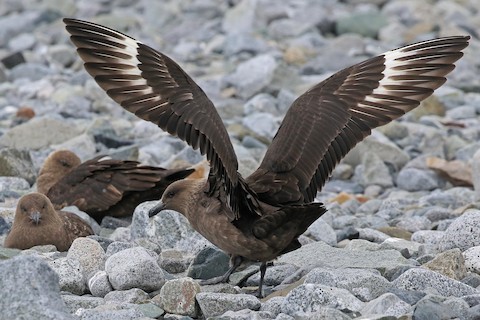
South Polar Skua, dark morphs. (Half Moon Island, Antarctica; December 11, 2016.) © Phillip Edwards
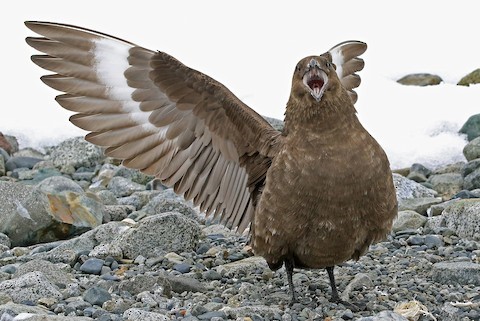
South Polar Skua, dark morph. (Half Moon Island, Antarctica; December 11, 2016.) © Phillip Edwards
Most appear unstreaked at a distance, but have variable concentrations of blond streaking around the head, neck, breast and back.
A pattern that recurs frequently among dark morphs is concentrated blond streaking on the nape. Other, less frequent, but consistent patterns include a blond-streaked collar or a blond-streaked cowl or cape—including the crown, upper back, and sides of the head and neck.
In flight, like all skuas, it shows a bright white flash at the base of the primaries. On the upperside, the white is limited, a stripe with dark bars. On the underwing, the white patch is larger, cleaner, and more triangular.

South Polar Skua, pale morph. (Commonwealth Bay, Antarctica; December 20, 2010.) © Kimberley Collins
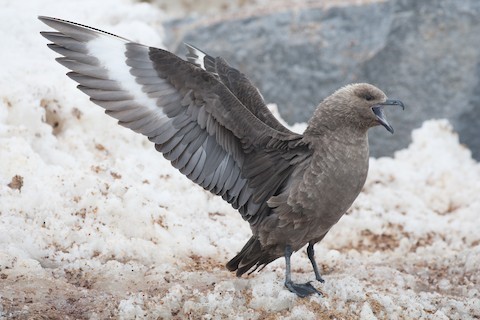
South Polar Skua, dark morph. (Neko Harbor, Andvord Bay, Antarctica; January 26, 2010.) © Chris Wood
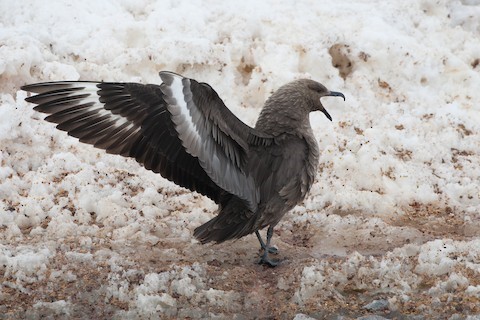
South Polar Skua, dark morph. (Neko Harbor, Andvord Bay, Antarctica; January 26, 2010.) © Chris Wood
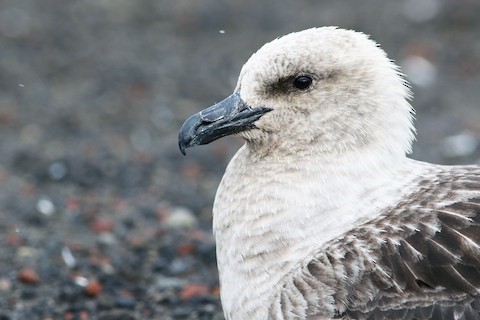
South Polar Skua, pale morph. (Whaler’s Bay, Deception Island, Antarctica; February 19, 2015.) © Andrew Spencer

South Polar Skua, dark morph. (Cuverville Island, Antarctica; January 10, 2010.) © Marbry Hopkins
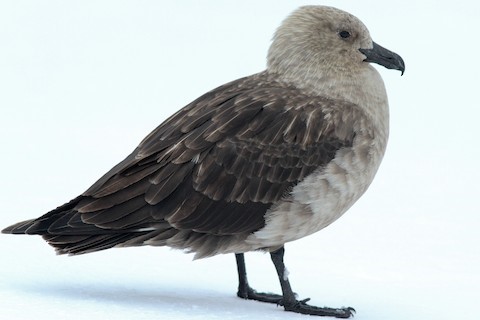
South Polar Skua, pale morph. (Half Moon Island, Antarctica; January 10, 2016.) © Steve Kelling
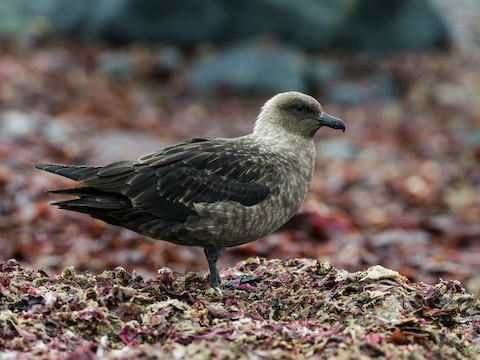
South Polar Skua, pale or intermediate morph. (D’Hainaut Island, Mikkelsen Harbor, Antarctica; February 14, 2015.) © Nick Athanas
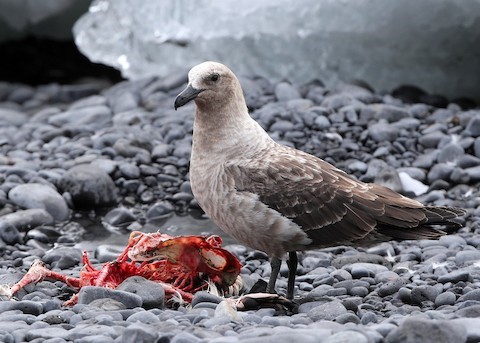
South Polar Skua, pale morph. (Brown Bluff, Antarctica; February 18, 2015.) © Hal and Kirsten Snyder

South Polar Skua, pale morph. (Esperanza Station, Antarctica; February 4, 2018.) © Leonardo Santoro
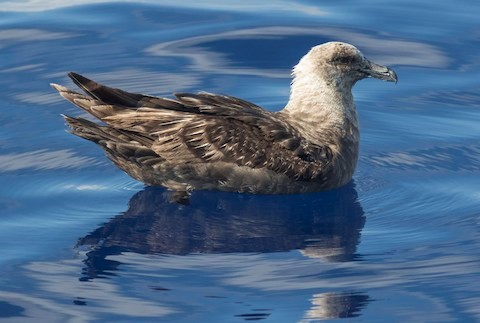
South Polar Skua, pale morph. (Offshore from Cape Hatteras, North Carolina; June 1, 2015.) © Michael Todd
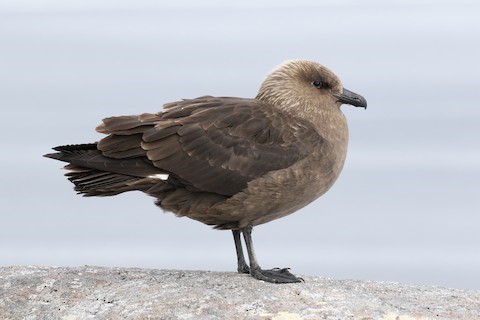
South Polar Skua, intermediate morph. (Useful Island, Antarctica; December 14, 2019.) © Noah Strycker

South Polar Skua, dark morph. (Damoy Point, Dorian Bay, Antarctica; January 31, 2017.) © Rémi Bigonneau

South Polar Skua, dark morph. (Half Moon Island, Antarctica; December 11, 2016.) © Phillip Edwards
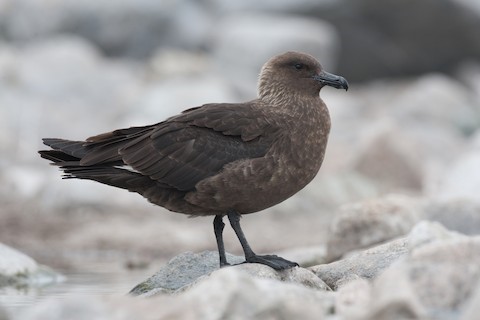
South Polar Skua, dark morph. (Neko Harbor, Andvord Bay, Antarctica; January 26, 2010.) © Chris Wood
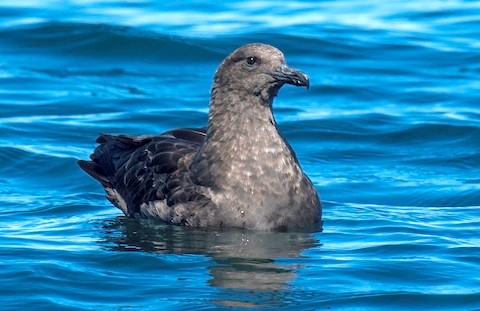
South Polar Skua, dark morph. (Offshore from Grand Manan Island, New Brunswick; September 5, 2020.) © Jim Carroll
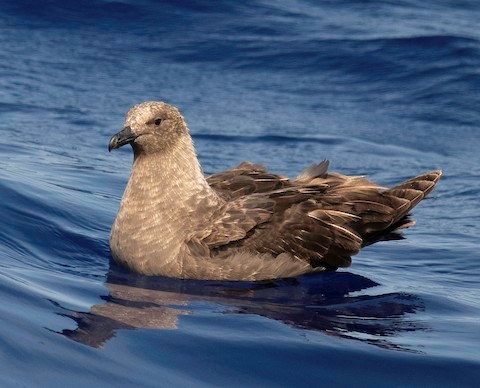
South Polar Skua, pale or intermediate morph. (Offshore from Cape Hatteras, North Carolina; May 20, 2019.) © Ed Corey
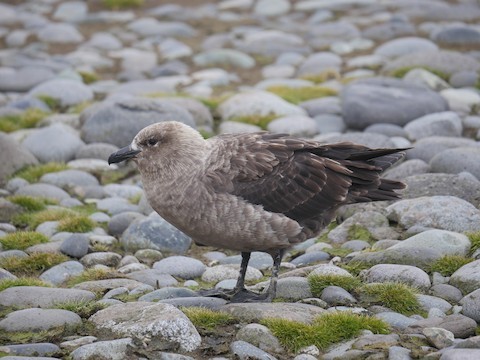
South Polar Skua, pale morph. (Turret Point, Antarctica; January 17, 2018.) © Peter Lowe
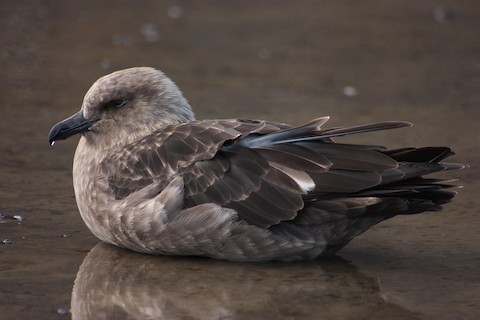
South Polar Skua, intermediate morph. (Whaler’s Bay, Deception Island, Antarctica; December 1, 2016.) © Rémi Bigonneau

South Polar Skua, intermediate morph. (Cuverville Island, Antarctica; February 21, 2017.) © Noah Strycker
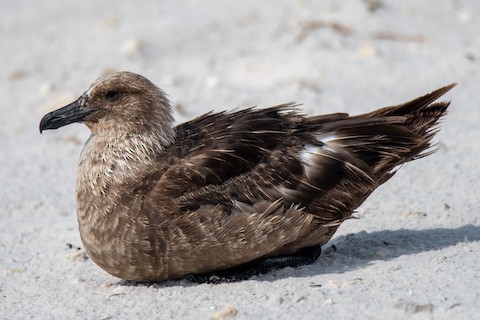
South Polar Skua, intermediate morph. (Fort Pickens, Gulf Islands National Seashore, Florida; August 19, 2020.) © Perry Doggrell
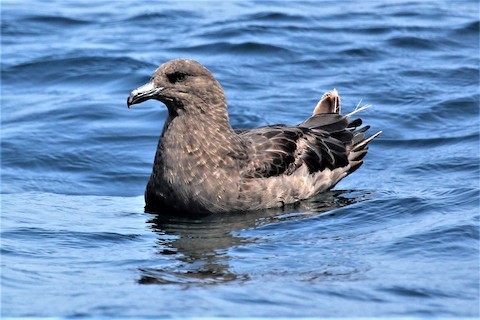
South Polar Skua, dark morph. (Eastern end of Georges Bank, offshore south of Nova Scotia; August 16, 2018.) © Dwayne Lowe

South Polar Skua, pale morph. (Offshore from Cape Hatteras, North Carolina; May 23, 2018.) © Andrew Dreelin
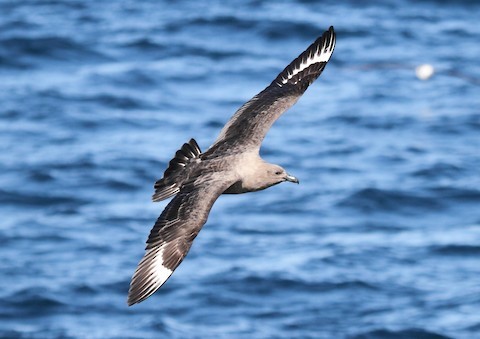
South Polar Skua, pale morph. (Offshore from Wollongong, New South Wales, Australia; September 23, 2012.) © Michael Rutkowski

South Polar Skua, intermediate morph. (Offshore from Kiama, New South Wales, Australia; March 25, 2017.) © Louise Summerhayes

South Polar Skua, dark morph. (Cuverville Island, Antarctica; January 10, 2010.) © Marbry Hopkins

South Polar Skua, dark morph. (Offshore from Cape Hatteras, North Carolina; June 1, 2015.) © Michael Todd

South Polar Skua, dark morph. (Offshore from San Diego, California; May 19, 2012.) © Matt Brady
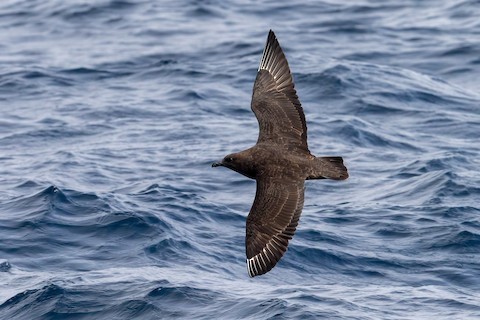
South Polar Skua, dark morph with unusually dark upperwings. (Offshore from Valparaíso, Chile; November 14, 2020.) © Fernando Díaz (Albatross Birding Chile)
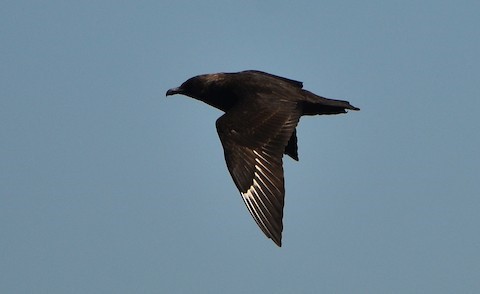
South Polar Skua, dark morph. (Offshore from Bodega Bay, California; September 18, 2015.) © Steve Tucker
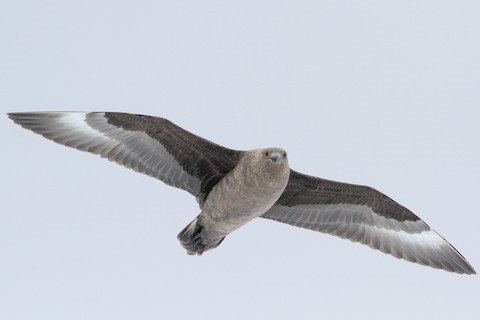
South Polar Skua, pale morph. (Antarctic Peninsula; January 14, 2016.) © Steve Kelling
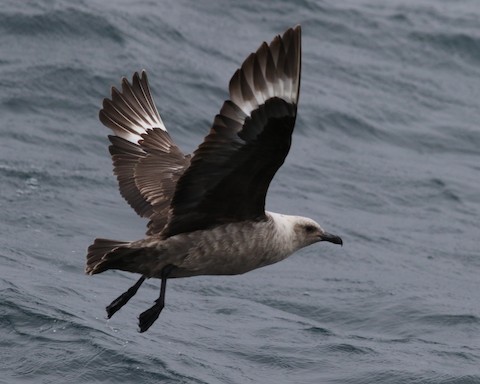
South Polar Skua, pale morph. (Offshore from Westport, Washington; June 15, 2019.) © Scott Mills
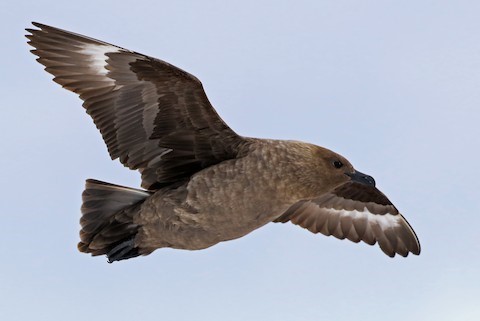
South Polar Skua, dark morph. (Cuverville Island, Antarctica; December 12, 2016.) © Phillip Edwards
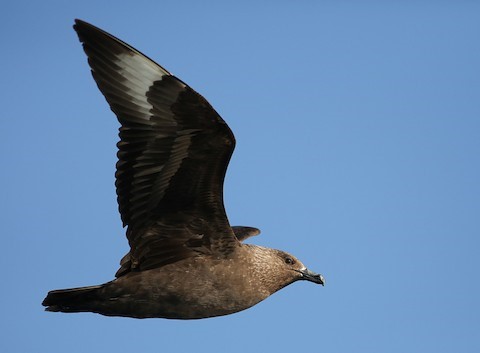
South Polar Skua, dark morph. (Offshore from Cape Hatteras, North Carolina; May 22, 2019.) © Kate Sutherland
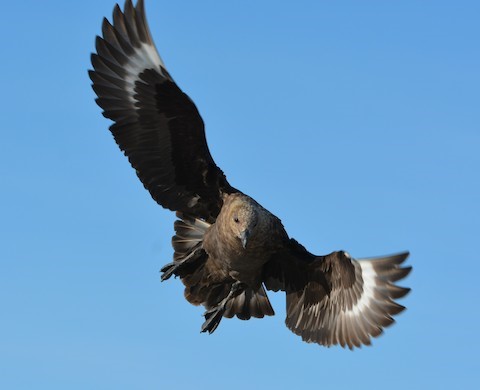
South Polar Skua, dark morph. (Mikkelsen Harbor, D’Hainaut Island, Antarctica; March 9, 2018.) © Geoff Carpentier
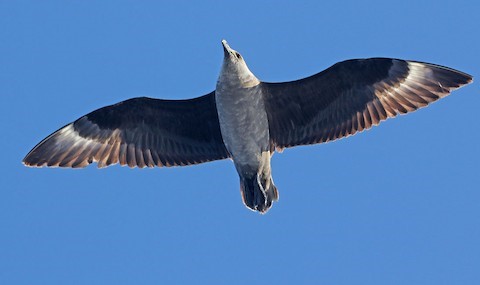
South Polar Skua, pale morph. (Offshore from Hatteras, North Carolina; June 1, 2015.) © Jay Gilliam

South Polar Skua, intermediate morph. (Offshore from Cape Hatteras, North Carolina; May 23, 2018.) © Kate Sutherland
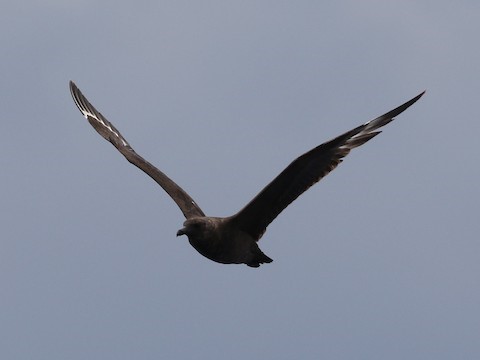
South Polar Skua, dark morph. (Offshore from Cape Hatteras, North Carolina; August 25, 2017.) © Steve Calver
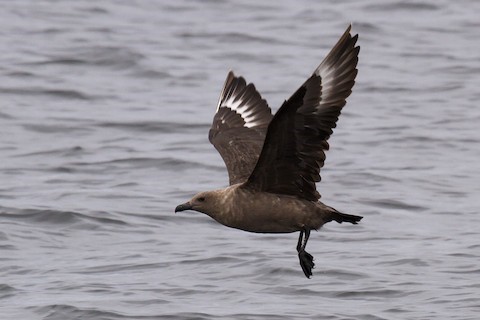
South Polar Skua, dark morph. (Offshore from Westport, Washington; September 7, 2019.) © Peter Kennerley

South Polar Skua, dark morph. (Petermann Island, Antarctica; December 1, 2006.) © Nigel Voaden
Immature Plumages. Immature South Polar Skuas closely resemble immatures of the various Brown Skua forms—in fact, they are not known to be distinguishable.
Juveniles typically have uniformly dark-brown, often blackish, plumage, above and below.
When molting, older immatures often have paler feathers interspersed on the upperparts, somewhat resembling both immatures and adults of some other skua species.

South Polar Skua, apparent juvenile. (Offshore from Nantucket, Massachusetts; August 25, 2018.) © Sean Williams

South Polar Skua, apparent juvenile. (Offshore from Nantucket, Massachusetts; August 25, 2018.) © Sean Williams

South Polar Skua, immature. (Race Point, Provincetown, Massachusetts; August 14, 2017.) © François Grenon
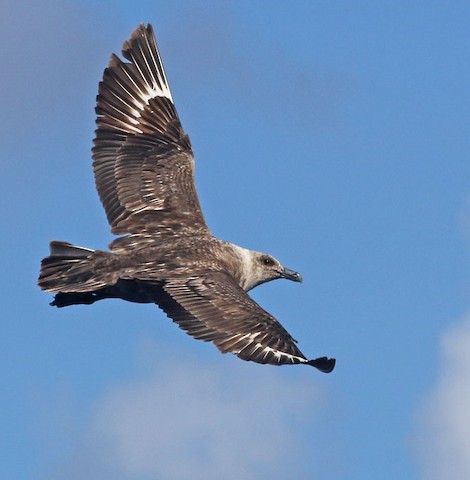
South Polar Skua, apparent subadult. (Offshore from Hatteras, North Carolina; June 1, 2015.) © Jay Gilliam

South Polar Skua, apparent juvenile. (Punta Dúngenes, San Gregorio, Magallanes, Chile; December 10, 2020.) © Santiago Imberti
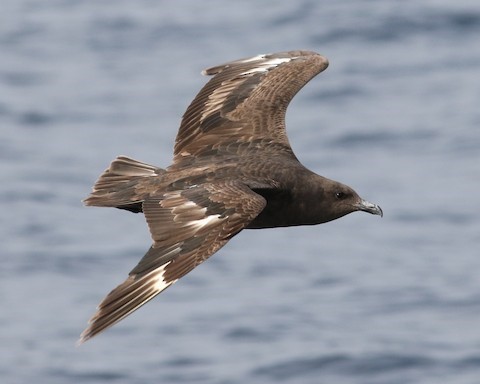
South Polar Skua, immature. (Offshore from Westport, Washington; October 4, 2020.) © Scott Mills

South Polar Skua, immature. (Offshore from Rockingham, New Hampshire; September 4, 2018.) © Stephen Mirick
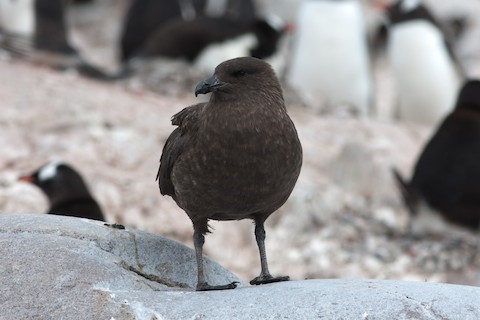
South Polar Skua, likely immature. (Cuverville Island, Antarctica; January 10, 2010.) © Marbry Hopkins
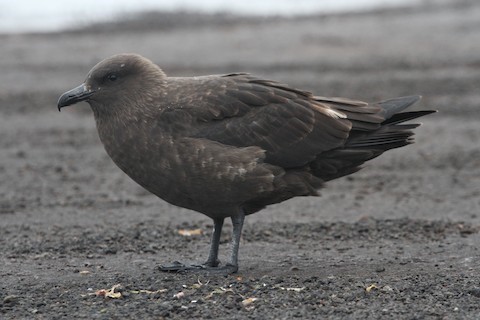
South Polar Skua, likely immature. (Deception Island, South Shetland Islands; December 3, 2011.) © James Holmes
Cf. Brown Skua. Throughout the southern oceans, South Polar Skua overlaps with Brown Skua—which itself comprises four forms that are possibly separate species. South Polar is highly variable and each form of Brown has some internal variation. Adults have some plumage tendencies that can be useful, especially when they are consistent with geographical probability, but immatures are variable and similar enough to be effectively unidentifiable in most cases—except by pure application of geographical probability.
Three of the four Brown Skua forms are localized: “Falkland” (antarcticus) around the Falkland Islands, southern Argentina, and elsewhere in the southwestern Atlantic north to southern Brazil; “Subtropical” (hamiltoni) around Tristan da Cunha, Gough, Amsterdam, and St. Paul Islands; and “Chatham” (ssp. nova) around the Chatham, Snares, and possibly other islands south of New Zealand. In each of those areas, especially adjacent to the breeding grounds, the local form presumably predominates most of the time.
Around the more southerly islands, and generally at mid-latitudes of the Southern Ocean, “Subantarctic” (lonnbergi) predominates. Farther south, near Antarctica, South Polar predominates—but they overlap along the Antarctic Peninsula, where they have been found to interbreed at least occasionally. Both “Subantarctic” and South Polar range widely at sea, and they regularly overlap across most of the southern oceans.
South Polars vary from mostly pale-brown to mostly blackish. The palest morphs are distinctive and do not resemble any form of Brown Skua. Dark morph South Polars (including immatures) can be either mostly blackish-brown or a warmer shade of brown. Compared to similar forms of Brown Skua, the typical plumage features of dark adult South Polars are: (1) mostly uniform upperparts with very little pale streaking; (2) often with blond-streaked feathering on the head, either limited to the nape, or forming a full collar, or a pale hood; but (3) sometimes with a dark-brown hood, contrasting with paller or lightly blond-streaked feathering on the neck, extending onto the upperparts and underparts. Subadult South Polars often show more streaking on the upperparts than adults do, which can cause confusion with Brown.
Brown Skuas are difficult to generalize. The widespread “Subantarctic” form, which overlaps widely with South Polar, has fairly consistent features. Immatures are usually all-dark with tones that vary from warm to cold to blackish. Adults usually have fairly prominent pale streaking on the back (including the scapulars), sometimes extending down to the rump and up to the nape. “Subantarctic” often shows a contrastingly darker hood.
Among the three more localized forms of Brown Skua, “Falkland” is fairly distinctive. Adults are typically a medium-dark shade of brown, with extensive blond streaking that is especially dense on the neck and usually extends across most of the upperparts and underparts. Many have a darker, mostly unstreaked crown, forecrown, or face. (Adult “Falkland” typically has approximately the same pattern as the North Atlantic Great Skua, but with blonder, less cinnamon streaks.) Immatures are generally unstreaked, usually darker overall than adults, but variable in tone.
“Subtropical” is less distinctive, and generally resembles the subadults of other forms, including South Polar. It typically has pale streaks sparsely but evenly distributed across its upperparts, including the wings, and often has a somewhat paler belly. Like “Subantarctic”, “Subtropical” often shows a dark hood.
“Chatham” is usually unstreaked, and varies from blackish to a medium-pale brown—much like an intermediate South Polar. “Chatham” often has a pale nape—much like many dark morph South Polars.
Cf. Great Skua. Great and South Polar Skuas overlap in the North Atlantic from March to October. Both are variable enough that some individuals may be difficult to identify even under optimal conditions. South Polar is especially variable and difficult to characterize, but Great can usually be identified by the combination of warm-toned plumage and dense pale streaks across the head, neck, back, and breast—and often a darker cap.
Notes
Monotypic species.
References
Alderfer, J., and J.L. Dunn. 2014. National Geographic Complete Birds of North America (Second Edition). National Geographic Society, Washington, D.C.
BirdLife International. 2018. Catharacta maccormicki. The IUCN Red List of Threatened Species 2018: e.T22694218A132533643. https://dx.doi.org/10.2305/IUCN.UK.2018-2.RLTS.T22694218A132533643.en. (Accessed May 8, 2021.)
Brazil, M. 2009. Birds of East Asia. Princeton University Press.
de la Peña, M.R., and M. Rumboll. 1998. Birds of Southern South America and Antarctica. Princeton University Press.
eBird. 2021. eBird: An online database of bird distribution and abundance. Cornell Lab of Ornithology, Ithaca, N.Y. http://www.ebird.org. (Accessed May 8, 2021.)
Garcia-del-Rey, E. 2011. Field Guide to the Birds of Macaronesia: Azores, Madeira, Canary Islands, Cape Verde. Lynx Editions, Barcelona.
Harrison, P. 1983. Seabirds: An Identification Guide. Houghton Mifflin, Boston.
Howell, S.N.G., and S. Webb. 1995. A Guide to the Birds of Mexico and Northern Central America. Oxford University Press.
Howell, S.N.G., and K. Zufelt. 2019. Oceanic Birds of the World. Princeton University Press.
Mullarney, K., L. Svensson, D. Zetterström, and P.J. Grant. 1999. Birds of Europe. Princeton University Press.
Pratt, H.D., P.L. Bruner, and D.G. Berrett. 1987. A Field Guide to the Birds of Hawaii and the Tropical Pacific. Princeton University Press.
Pyle, R.L., and P. Pyle. 2017. The Birds of the Hawaiian Islands: Occurrence, History, Distribution, and Status. Version 2 (January 1, 2017). http://hbs.bishopmuseum.org/birds/rlp-monograph/. B.P. Bishop Museum, Honolulu, Hawaii.
Schulenberg, T.S., D.F. Stotz, D.F. Lane, J.P. O’Neill, and T.A. Parker. 2007. Birds of Peru. Princeton University Press.
Sibley, D.A. 2000. The Sibley Guide to Birds. Alfred A. Knopf. New York.
Xeno-Canto. 2021. South Polar Skua – Stercorarius maccormicki. https://www.xeno-canto.org/species/Stercorarius-maccormicki. (Accessed May 8, 2021.)

